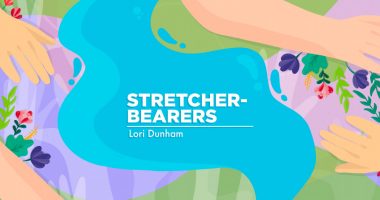The home accommodations we’ve made for our daughter with LEMS
How increased accessibility has improved this teen's safety, independence

My husband and I will have been married 29 years this October. In that time, we’ve lived in 16 homes, thanks to the U.S. Navy.
Over the years, what we’ve looked for in a house has changed. At first, having four walls and a roof over our head was enough. After all, it was just my husband and me, and we didn’t need or have much. As time went by and kids came along, however, our needs changed.
When we moved to Thailand, a safe neighborhood and air conditioning in some rooms were a must. In Italy, we wanted a home with heat that was close to the piazza. In Singapore, we wanted air conditioning and a home near the American school.
We never really thought too much beyond the obvious comforts in making a house a home.
But when our daughter Grace was diagnosed with Lambert-Eaton myasthenic syndrome (LEMS) at age 15, that all changed. I began looking at our home in a totally different light.
All of a sudden, every detail mattered. That steep set of stairs leading up to all of the bedrooms was now a hazard for our daughter, who struggled to walk. The steps with no railing on our front porch were impossible for her to navigate. Every time Grace stepped into the tub to take a shower, she faced a potential fall.
Everywhere I looked, there seemed to be another obstacle for Grace to maneuver.
Improving accessibility
Thankfully, we were set to move again shortly after she was diagnosed. This change gave us the ability to choose a house specifically with Grace in mind.
We were able to select a one-story home with a walk-in shower. Seamless tile floors ensured Grace wouldn’t trip over uneven flooring. Our home was finally manageable for her.
However, the more we settled in, the more I saw things that needed to change. I knew I had to find ways to facilitate Grace’s growing independence and increased responsibility. We put some serious thought into ways to accommodate our daughter, specifically in the kitchen.
Oh, how I love my colorful Le Creuset cookware. I’ve spent years collecting the odd Le Creuset frying pan or stockpot. I treasure my antique cast-iron Dutch oven. But have you ever noticed how heavy those pots and pans are? I never did until my daughter tried lifting one from the stove to the sink. It was nearly impossible.
Gone are the days of storing dishes on the top shelves in our kitchen cabinets or placing heavy serving dishes above shoulder height. I had to make changes if I wanted Grace to be able to unload the dishwasher without help.
We didn’t make these accommodations to remove every obstacle from Grace’s life. She faces plenty we can’t control. Our goal is to help her feel successful as she enters adulthood and prepares for independent living.
Have you made any home accommodations for a disability? Please share in the comments below.
Note: Lambert-Eaton News is strictly a news and information website about the disease. It does not provide medical advice, diagnosis, or treatment. This content is not intended to be a substitute for professional medical advice, diagnosis, or treatment. Always seek the advice of your physician or other qualified health provider with any questions you may have regarding a medical condition. Never disregard professional medical advice or delay in seeking it because of something you have read on this website. The opinions expressed in this column are not those of Lambert-Eaton News or its parent company, BioNews, and are intended to spark discussion about issues pertaining to Lambert-Eaton myasthenic syndrome.







Comments